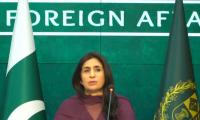Developing cities around the world are facing challenges in modernising their urban water systems to serve the increasing demand and, at the same time, bringing down the costs of water extraction, treatment, and distribution.
According to Unicef, Pakistan is among the top five in the list of countries with high child mortality. One common factor among these countries is that a significant percentage of their population doesn’t have access to safe drinking water. According to the World Bank, only 40.724 percent of the urban population in Pakistan has access to a safe drinking water source.
Water and sanitation agencies (Wasas) are responsible for the planning, design, maintenance, and operation of water supply and sewerage systems in cities across Pakistan. The core element of their mandate is the provision of safe, reliable, and efficient water to the government and the public sector.
Almost half of the population in cities lack access to safe drinking water. The reason for this is under-investment in the urban water infrastructure. The quantity of water is insufficient and quality of water has deteriorated. This makes it difficult to satisfy basic water requirements and ensure the wellbeing of the people. Under-investment in the urban water infrastructure is a consequence of low-cost recovery from consumers. Low-cost recovery prohibits Wasas to maintain and rehabilitate the water supply and distribution system. This, in turn, decreases the level of satisfaction among users who, in turn, pay even less. This reinforcing feedback process continues until the system is in such a dilapidated condition that makes improvements seem practically impossible.
The UN’s Sustainable Development Goals (SDGs) require all nations of the world to expand water networks to supply safe water and sanitation to all people. The SDG target 6.1 relates to providing access to safe and affordable drinking water for all by 2030. Pakistan is a signatory to the SDGs agenda and has incorporated these goals into its national plan through a unanimous resolution in parliament.
Recently, Prime Minister Imran Khan has directed the Ministry of Water Resources and the Planning Division to undertake urban water schemes in all cities of Pakistan on a priority basis. Before proceeding with any plans, there are lessons learnt through past experiences that need to be borne in mind. Environmentally and financially sustainable strategies need to be adopted in tackling the challenge of urban water management and expansion.
Previous governments also tried to tackle this issue. But the complexity of the problem either prevented successive governments from moving forward with their plans or their plans failed because the plans were developed in a hurry without giving much thought to the long-term financial sustainability of the initiatives that they undertook.
Financial constraints are the major hurdle to improving the urban water infrastructure in cities in Pakistan. Financial constraints arise from low-cost recovery from users. With no water-tariff mechanism, it is difficult to develop budgetary frameworks that will ensure sustainable management of the system. In addition, the user’s willingness to pay depends on the reliability of water supply and the quality of water.
Both have material and energy requirements which, if provided, can increase the expenditure of water utilities and higher revenues would be required to bridge the cost-return gap. Ensuring quality is another challenge. Even with improvements in treatment processes, the user might still receive water of a deteriorated quality because the distribution infrastructure is old.
Pakistan is an energy-scarce country and improved urban water systems require energy from the water extraction stage to the distribution phase. Concerns over where the additional energy will come from could be another obstacle to improving the system. All constraints are interrelated and interdependent and, therefore, a holistic management strategy that considers all factors and points to an optimised solution is required.
Future planning needs to incorporate climatic modelling to assess the likely impacts of extremes such as floods and droughts. Water resources diversification is required to prevent potential risks due to dependence on a single-water source for an entire city. Sustainable demand management strategies through awareness and sufficient tariffs need to be implemented for full-cost recovery and water conservation. Numerous examples from across the world can be used to develop innovative strategies to make the system financially sustainable.
The overarching goal for the sustainable management of urban water systems in Pakistan should be financial sustainability because cost is the main driver of the system. Without the development and implementation of budgetary frameworks that can eliminate the current bottlenecks in improving the system, long-term water security for cities is difficult to ensure.
The bottom-line is: no strategy for improving urban water systems can be successful until it has a comprehensive plan for ensuring financial sustainability.
The writer is pursuing a PhD in waterresources engineering at the University of Utah. Email: engr.danyalaziz@gmail.com
A woman walks past a building of the International Monetary Fund. — AFP/FileThe annual and spring meetings of the...
Late Benazir Bhutto's daughter Asifa Bhutto Zardari addresses the Christian community in Bihar Colony on January 23,...
Representational image. — PexelsWater is an important scarce natural resource that is required for several everyday...
Pakistani employees of online marketplace company Kaymu at work in Karachi. — AFP/FileThe true spirit of development...
India uses Afghanistan as a backstage area to carry out terrorist attacks against Pakistan
Another report by the Pakistan Institute of Peace Studies states that 78 per cent of attacks have been carried out by...







